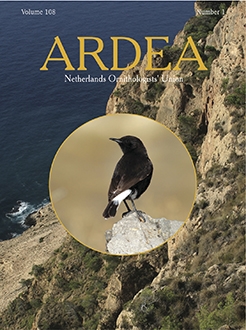Decreases in suitable habitat due to loss and fragmentation on the African non-breeding grounds are believed to be a driver of the declines in Palaearctic migrants. However, the effects of habitat loss and fragmentation on individual migrants have rarely been investigated. The European Honey-buzzard Pernis apivorus, a migratory forest specialist, displays the characteristics of a species that would be sensitive to declines in suitable habitat. We assessed site fidelity, habitat selection and home range characteristics of 32 tracked European Honey-buzzards in Africa to understand how habitat transformation on the non-breeding grounds affects the movement behaviour (particularly habitat use and home range characteristics) of the species. Adults had greater site fidelity than juveniles, indicating that young birds were exploring to locate suitable habitat for future non-breeding territories. Besides site fidelity, there were few significant differences between the movements of adult and juvenile Honey-buzzards. Birds of all age classes strongly selected treed habitat, as expected. Treed largest patch index and edge density had a negative effect on home range size, demonstrating that Honey-buzzards rely on large tracts of continuous forest, but can tolerate some level of fragmentation. Individuals with larger home ranges due to greater levels of forest fragmentation moved greater daily distances. In addition, Honey-buzzards spent more time in home ranges with larger treed largest patch indices and lower edge density. This reveals that birds that do not have access to a large patch of unfragmented forest are both flying greater distances on a daily basis and moving to new home ranges more often. This likely results in greater energy expenditure over their non-breeding period, which may have adverse effects on their long-term survival. Furthermore, our analyses support the hypothesis that continuing forest loss in Africa will have a negative effect on the European Honey-buzzard population.
How to translate text using browser tools
16 October 2020
Forest Availability and Fragmentation Drive Movement Behaviour of Wintering European Honey-Buzzard Pernis apivorus in Africa
Caroline Howes,
Patrik Byholm,
Craig T. Symes
ACCESS THE FULL ARTICLE

Ardea
Vol. 108 • No. 2
November 2020
Vol. 108 • No. 2
November 2020
European Honey-buzzard
fragmentation
habitat selection
home range
Pernis apivorus
satellite tracking





